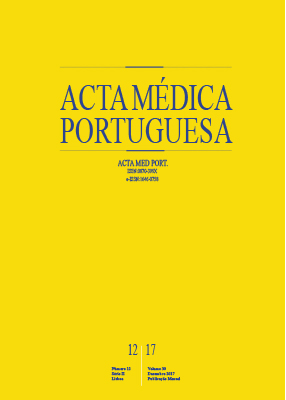Selection of Donor-Recipient Pairs in Renal Transplantation: Comparative Simulation Results
DOI:
https://doi.org/10.20344/amp.8992Keywords:
Donor Selection, Histocompatibility Testing, HLA Antigens, Kidney Transplantation, Portugal, Tissue and Organ ProcurementAbstract
Introduction: Implemented in 2007 by Ordinance No. 6357, allocation rules of cadaveric donor kidneys seek to distribute equitably a scarce community resource to patients who can improve their survival and quality of life. As stated in the aforementioned ordinance these rules must be updated whenever the state of the art recommends it. The objective of this work is to evaluate and compare three cadaveric donor allocation models: scoring criteria of ordinance nº 6537/2007 (model 1); similar to the previous model but with a lower score for the dialysis time (model 2); and a model adapted from the previously proposed color allocation system (model 3).
Material and Methods: For the purpose of this analysis we generated data about 70 cadaveric donors taking into account information published regarding blood group distribution and human leucocyte antigens allelic and haplotype frequencies of Portuguese voluntary donors. We generated also data for a simulated waiting list of 500 first-time kidney transplant candidates.
Results: We observed fewer candidates selected by model 3 with more than 3 human leucocyte antigens mismatches (39.3%) when compared to those selected by model 1 with more than 3 human leucocyte antigens mismatches (57.1%, p < 0.01).
Discussion: In our analysis, model 3 selects transplant candidates with a lower number of human leucocyte antigens mismatches when compared to the adapted rules for kidney allocation of Ordinance No. 6537/2007 (model 1) without penalizing candidates with a longer time on dialysis.
Conclusion: The analysis and discussion of the best rules for allocation of such a scarce resource as organs from deceased donors should be a continuous and adaptive process inherent to transplant candidate’s waiting list evolution and mutation.
Downloads
Downloads
Published
How to Cite
Issue
Section
License
All the articles published in the AMP are open access and comply with the requirements of funding agencies or academic institutions. The AMP is governed by the terms of the Creative Commons ‘Attribution – Non-Commercial Use - (CC-BY-NC)’ license, regarding the use by third parties.
It is the author’s responsibility to obtain approval for the reproduction of figures, tables, etc. from other publications.
Upon acceptance of an article for publication, the authors will be asked to complete the ICMJE “Copyright Liability and Copyright Sharing Statement “(http://www.actamedicaportuguesa.com/info/AMP-NormasPublicacao.pdf) and the “Declaration of Potential Conflicts of Interest” (http:// www.icmje.org/conflicts-of-interest). An e-mail will be sent to the corresponding author to acknowledge receipt of the manuscript.
After publication, the authors are authorised to make their articles available in repositories of their institutions of origin, as long as they always mention where they were published and according to the Creative Commons license.









